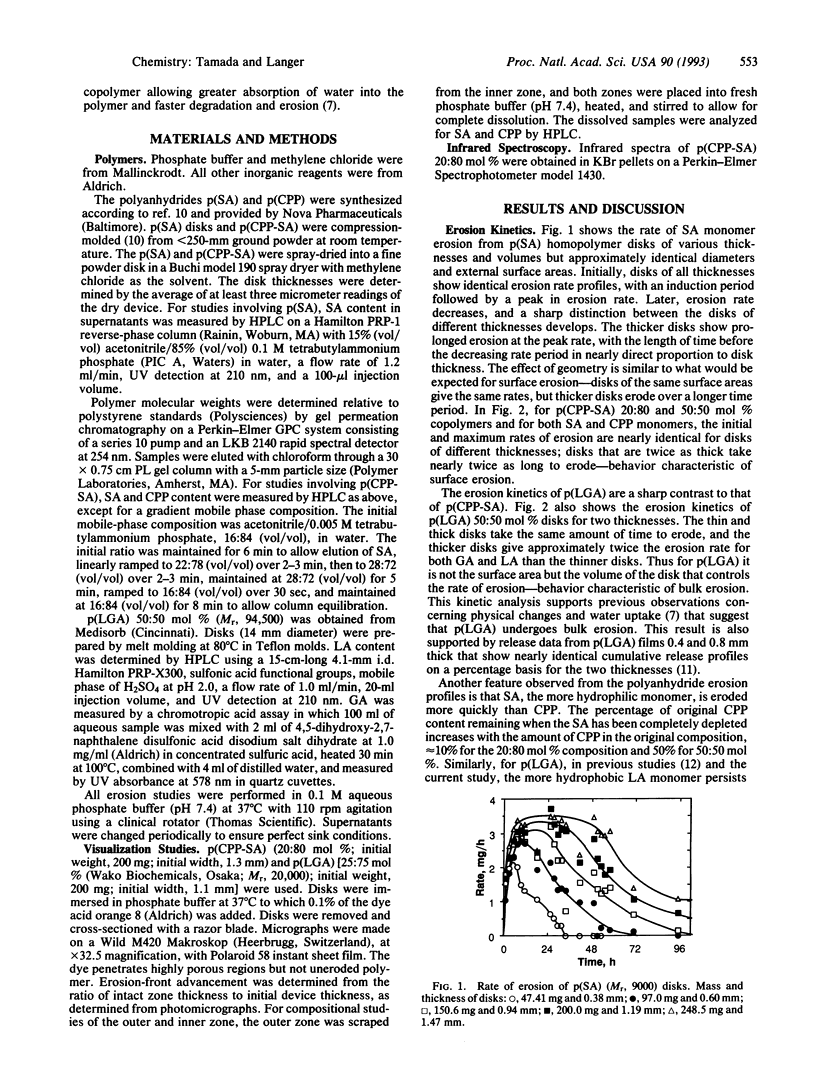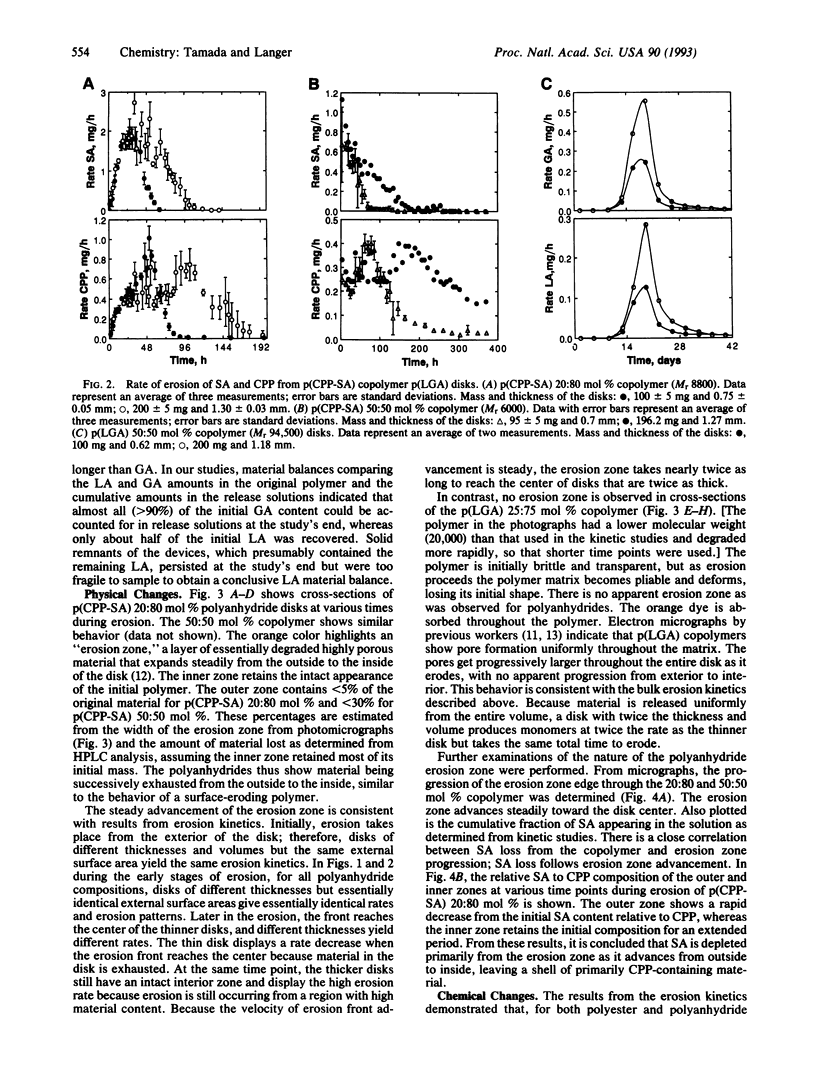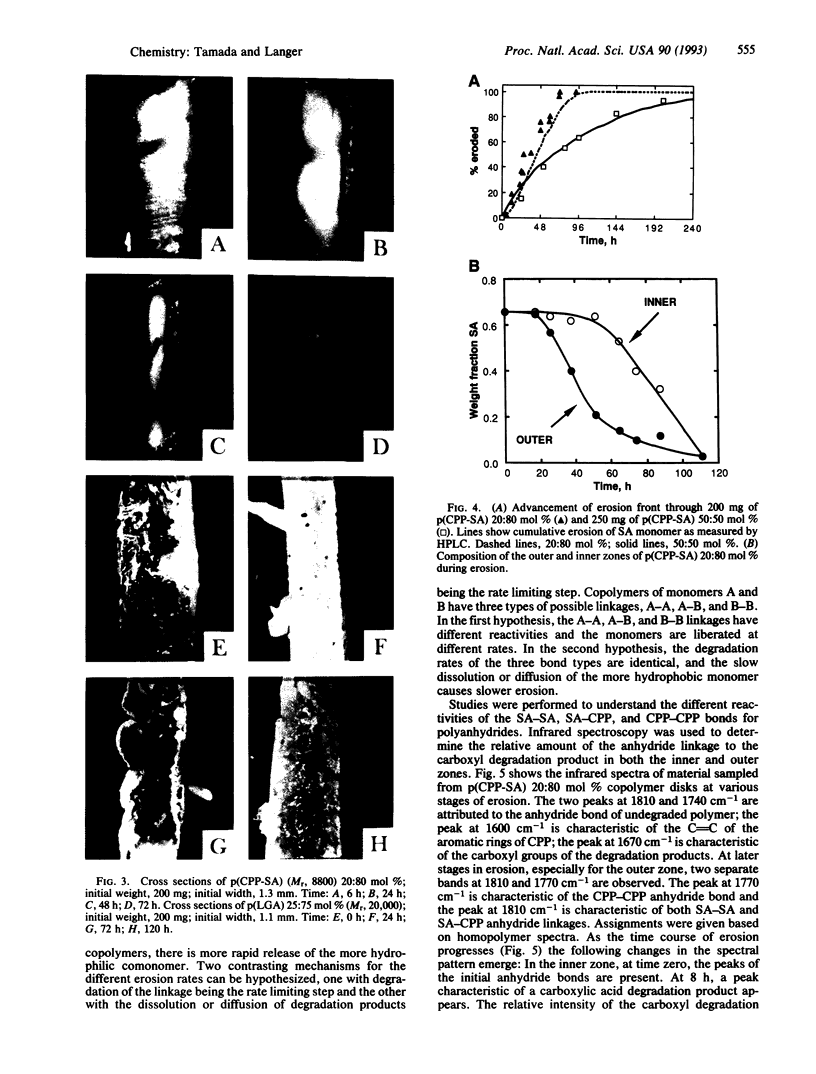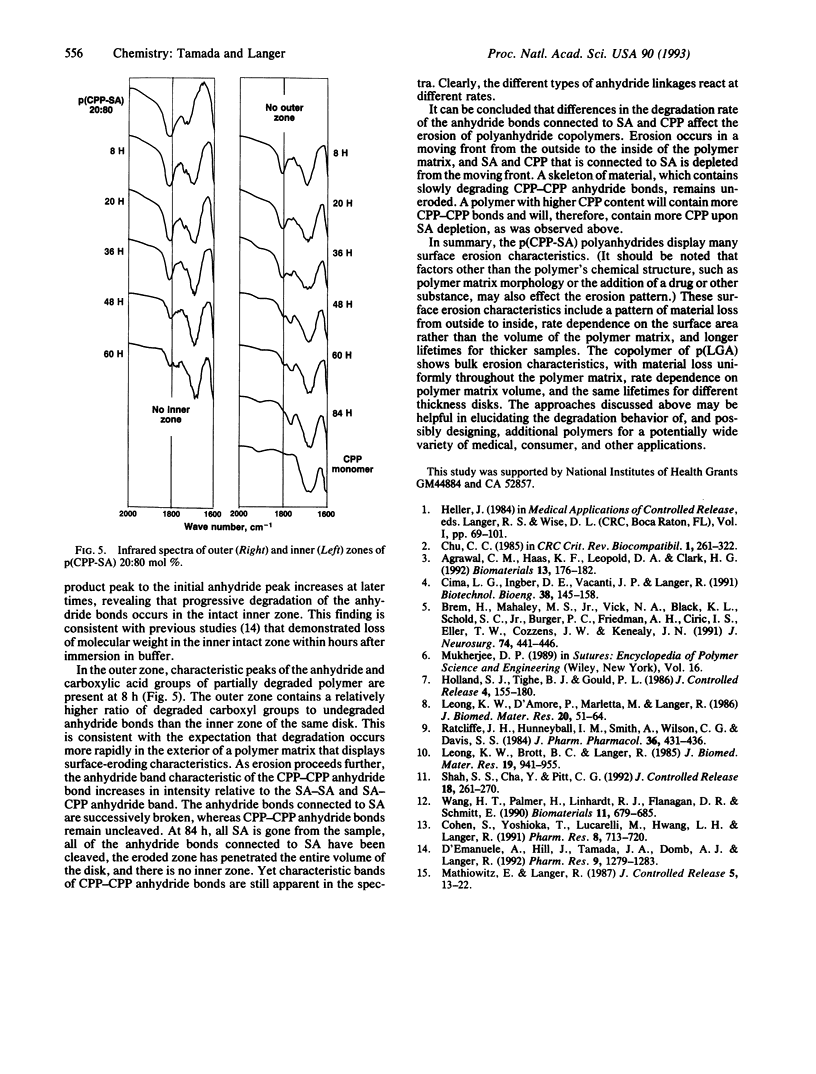Abstract
Degradable polymers are beginning to play an increasing role as materials for environmental and medical applications. Understanding factors that control erosion, such as bond cleavage and the dissolution and diffusion of degradation products, will be critical to the future development of these materials. Erosion kinetics, photomicroscopy, and infrared spectroscopy were used to understand the erosion mechanism of two families of degradable polymers, polyanhydrides and polyesters. Polyanhydrides exhibit behavior more characteristic of surface erosion, whereas the polyesters exhibit bulk erosion patterns. Control of erosion times from a few days to several years can be achieved by a judicious choice of monomer units and bond selection.
Full text
PDF




Images in this article
Selected References
These references are in PubMed. This may not be the complete list of references from this article.
- Agrawal C. M., Haas K. F., Leopold D. A., Clark H. G. Evaluation of poly(L-lactic acid) as a material for intravascular polymeric stents. Biomaterials. 1992;13(3):176–182. doi: 10.1016/0142-9612(92)90068-y. [DOI] [PubMed] [Google Scholar]
- Brem H., Mahaley M. S., Jr, Vick N. A., Black K. L., Schold S. C., Jr, Burger P. C., Friedman A. H., Ciric I. S., Eller T. W., Cozzens J. W. Interstitial chemotherapy with drug polymer implants for the treatment of recurrent gliomas. J Neurosurg. 1991 Mar;74(3):441–446. doi: 10.3171/jns.1991.74.3.0441. [DOI] [PubMed] [Google Scholar]
- Cohen S., Yoshioka T., Lucarelli M., Hwang L. H., Langer R. Controlled delivery systems for proteins based on poly(lactic/glycolic acid) microspheres. Pharm Res. 1991 Jun;8(6):713–720. doi: 10.1023/a:1015841715384. [DOI] [PubMed] [Google Scholar]
- D'Emanuele A., Hill J., Tamada J. A., Domb A. J., Langer R. Molecular weight changes in polymer erosion. Pharm Res. 1992 Oct;9(10):1279–1283. doi: 10.1023/a:1015801216466. [DOI] [PubMed] [Google Scholar]
- Leong K. W., Brott B. C., Langer R. Bioerodible polyanhydrides as drug-carrier matrices. I: Characterization, degradation, and release characteristics. J Biomed Mater Res. 1985 Oct;19(8):941–955. doi: 10.1002/jbm.820190806. [DOI] [PubMed] [Google Scholar]
- Leong K. W., D'Amore P. D., Marletta M., Langer R. Bioerodible polyanhydrides as drug-carrier matrices. II. Biocompatibility and chemical reactivity. J Biomed Mater Res. 1986 Jan;20(1):51–64. doi: 10.1002/jbm.820200106. [DOI] [PubMed] [Google Scholar]
- Ratcliffe J. H., Hunneyball I. M., Smith A., Wilson C. G., Davis S. S. Preparation and evaluation of biodegradable polymeric systems for the intra-articular delivery of drugs. J Pharm Pharmacol. 1984 Jul;36(7):431–436. doi: 10.1111/j.2042-7158.1984.tb04419.x. [DOI] [PubMed] [Google Scholar]
- Wang H. T., Palmer H., Linhardt R. J., Flanagan D. R., Schmitt E. Degradation of poly(ester) microspheres. Biomaterials. 1990 Nov;11(9):679–685. doi: 10.1016/0142-9612(90)90026-m. [DOI] [PubMed] [Google Scholar]



